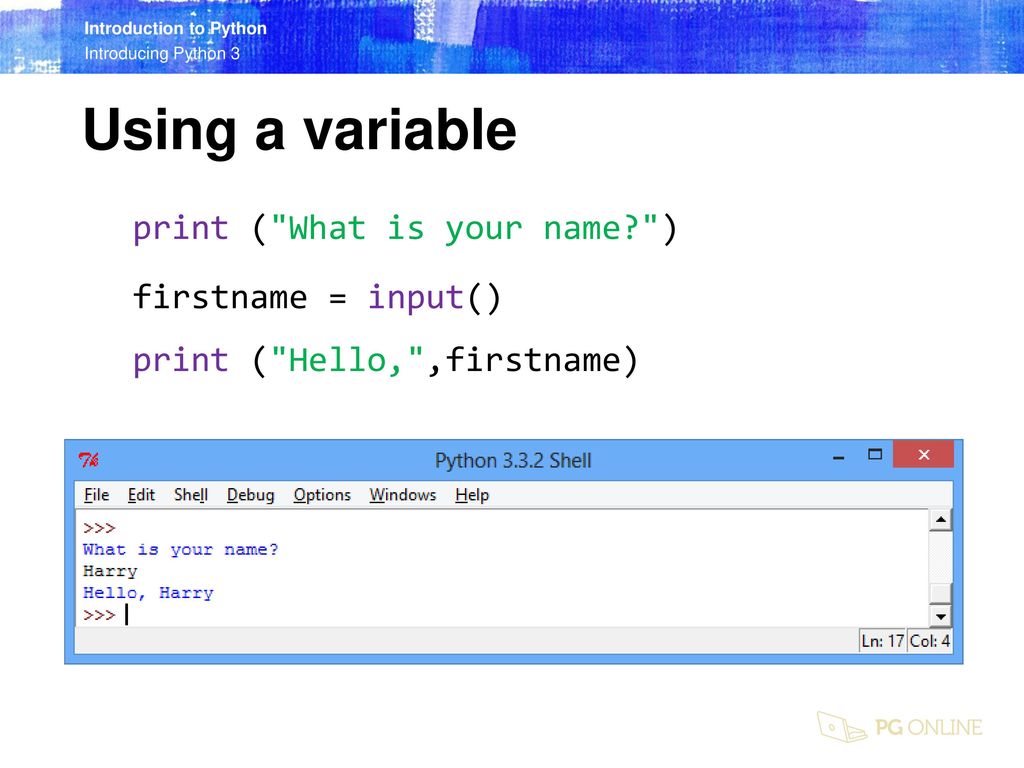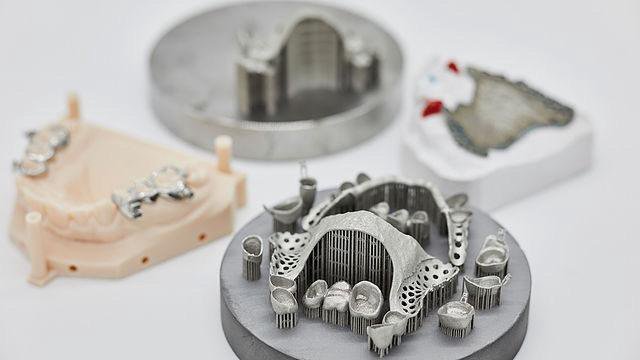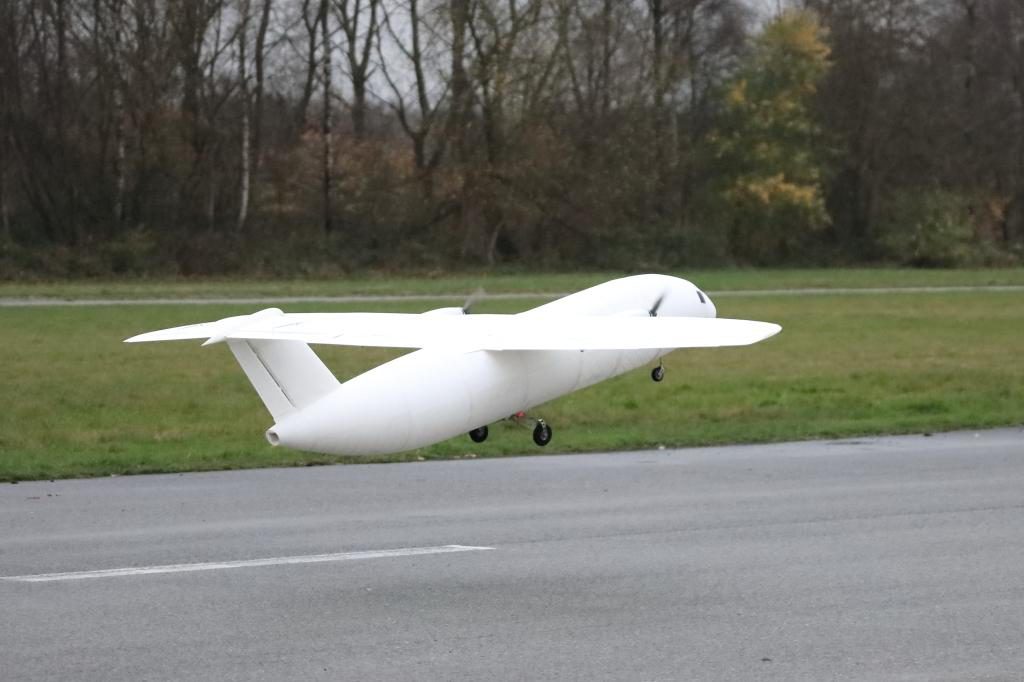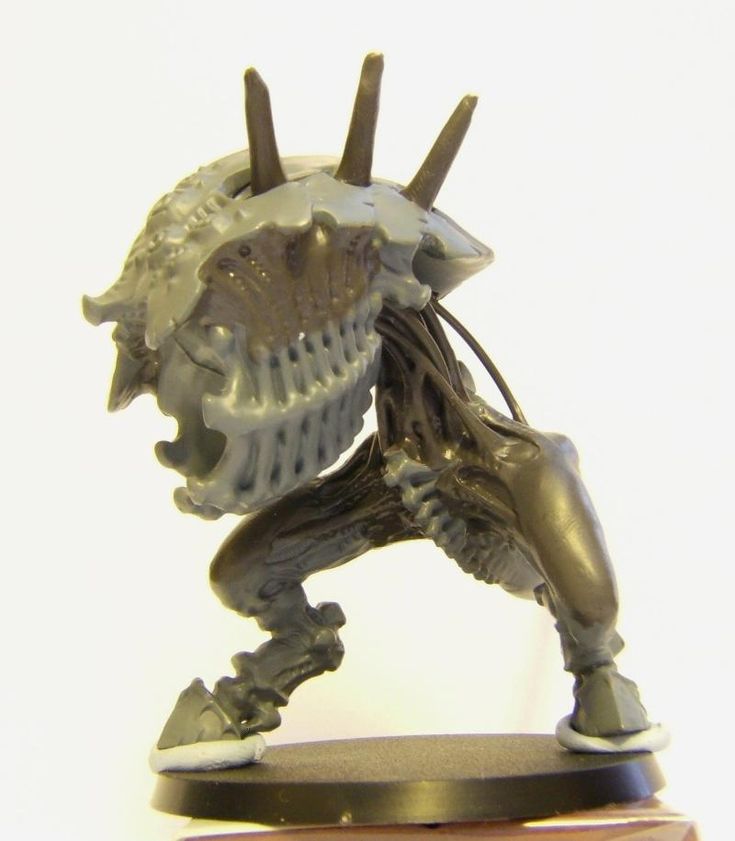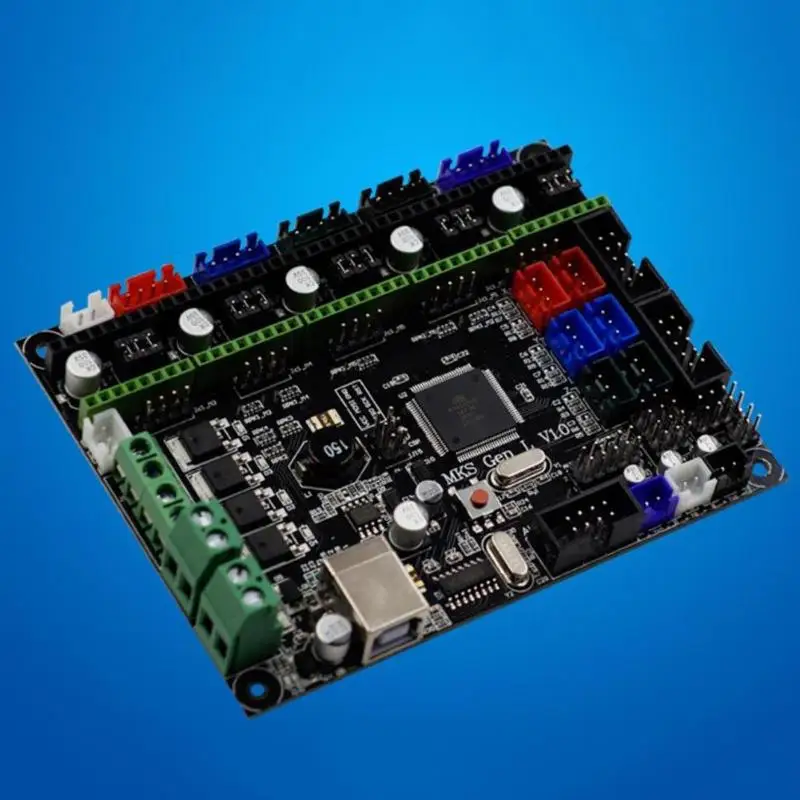Polhemus 3d scanner
Polhemus Scanning Applications
- Home >
- Scanning/Digitizing>
- Applications
In our more than 50-year tenure, Polhemus technology has powered many 3D laser scanning applications around the world. We are proud that so many cutting-edge applications in health care, military, and research and technology are powered by Polhemus. Link to specific case studies below in the areas of orthotics and prosthetics, reverse engineering and rapid prototyping, and more. Below is just a sample of notable applications in 3D scanning that have enabled our customers to break new ground and redefine the standards in their fields and industries. For a more detailed look at Polhemus scanning applications, go to: scanning case studies.
Orthotics and Prosthetics
No more plaster casting! FastSCAN has revolutionized the process of fitting prosthetics and orthotics, leaving the plaster mess behind. The scanning process is quick, clean and there is no pain. FastSCAN is being used in more than 700 O&P clinics worldwide. FastSCAN continues to be the leader in orthotics and prosthetics.
Cosmetic and Reconstructive Surgery
When it comes to cosmetic and reconstructive surgery, skill, artistry and technology must blend to achieve aesthetic results. FastSCAN provides an advanced comparative tool with the ability to perform volumetric analysis both pre-op and post-op. FastSCAN has also been used in oral and maxillofacial surgery.
Archaeology
FastSCAN™ is perfectly portable and easy to bring directly to the field for highly accurate scanning of relics, and for replication and digital archiving. It's been used in archaeology in a number of ways, including: the Joint Mongolian-Smithsonian Deer Stone Project, and a study on the 3D orientation of archaeological fragments coming from a Gothic spire.
Reverse Engineering and Rapid Prototyping
FastSCAN™provides the technology to become more efficient in the production process by producing digital 3D models.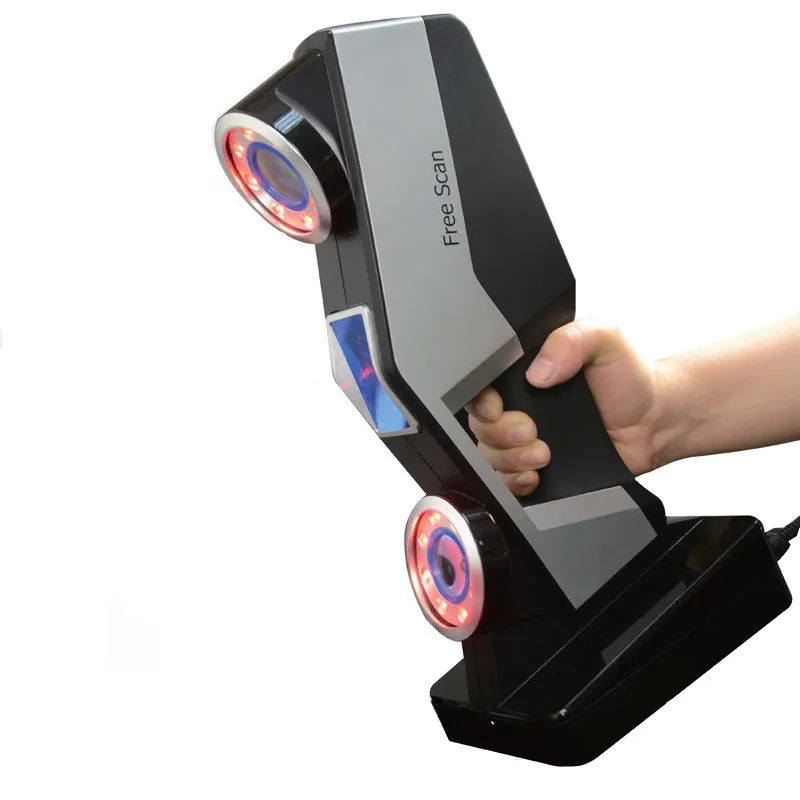 When manufactured parts when a blueprint is not available in order to remanufacture it. FastSCAN has been used for a variety of projects. Examples include reverse engineering for vehicles and rapid production of guitars.
When manufactured parts when a blueprint is not available in order to remanufacture it. FastSCAN has been used for a variety of projects. Examples include reverse engineering for vehicles and rapid production of guitars.
Woodworking, Custom Manufacturing and Restoration
The portability of FastSCAN makes it easy to take with you on the job. With the freedom to move around the object as needed to get a complete scan image in seconds, FastSCAN has been the ideal choice for projects that require custom manufacturing, 3D scanning for woodworking, and 3D scanning for restoration work. The outcome has been a great savings in time and money, while achieving quick, precision results.
Forensics
FastSCAN™ is one of the latest tools introduced into the forensic market. It's the most portable, lightweight, cost-effective scanning solution available, allowing you to bring the scanner to the scene. FastSCAN helps improve accuracy and efficiency of measurement documentation by providing an instant 3D representation. Optional for the scanner is the Stylus, which provides position and orientation markers for reference landmarks.
Optional for the scanner is the Stylus, which provides position and orientation markers for reference landmarks.
3D Rapid Prototyping Reproductions in Art
FastSCAN has been used by numerous artists for 3D rapid reproductions of artwork. This has proven for many artists to allow them to focus more time on creating, saving both time and money. FastSCAN has successfully digitized world renowned sculptures, resulting in a much less labor intensive process--and FastSCAN has enabled 3D rapid prototyping to replicate unique mixed media art.
Artistic Creativity
FastSCAN™ files import easily into many graphic arts software packages for image manipulation and texture mapping. Dan Short, from the Art Institute of Philadelphia, had his face scanned with two different expressions. The scans were exported as .3ds files to be used in 3D Studio Max. The final art was achieved using rendering with a camera, adding color and using a custom brush for effects (photo courtesy of Dan Short).
Metrology
By adding accessories, you can do more with your 3D shape capture. By adding a stylus and software, you have the ability to make linear, circumferential, radial and volumetric measurements of complex three dimensional surfaces. At right is a scan of an object using the FastSCAN and Polhemus Stylus markers.
Entertainment and 3D Animation
Widely used in the entertainment industry for character animation and computer games, FastSCAN has made its mark in the entertainment world in a number of ways, including appearances in television shows, and used in a variety of hollywood blockbuster movies. Below are just a few of the ways FastSCAN has been used in entertainment and 3D animation. (photo courtesy of Gentle Giant Studios).
- Used in Star Wars--scanning 1972 artifacts for archiving
- Used in the Hanes® "Jackie Goes Tagless" commercial to generate the computer graphic stunt double
- Appeared in Law & Order: Special Victims Unit (Season 3, 'Denial')
- Appeared in two episodes of CSI:NY in 2006
- Used in blockbuster films, including Lord of the Rings--scanning maquettes up to six feet tall
- Used in Men in Black II, scanning Will Smith’s face
Read more about what we offer in specific markets: Healthcare, Military, and Research & Technology.
First Sun uses Polhemus FastSCAN for 3D laser scanning of objects for special effects and animation
As the industry's most compact handheld laser scanner, FastSCAN™, is a fast, flexible and attractively priced system for scanning 3D objects and significantly speeds up the 3D modeling and animation process. FastSCAN was the perfect solution for creating special effects for this movie project.
First Sun is a company associated with The Gibson Group, dedicated exclusively to feature film production. In 2000, it premiered writer/director, Glenn Standring's The Irrefutable Truth About Demons, at the Cannes Film Festival.
The Gibson Group is recognized as one of New Zealand's leading independent film and television production companies. It has built an international reputation based on creativity and professional excellence and specializes in the production of high-end television drama for both primetime and children's audiences. Arts magazine, comedy and information programming also contribute to an output of between 80 and 100 hours of programming each year.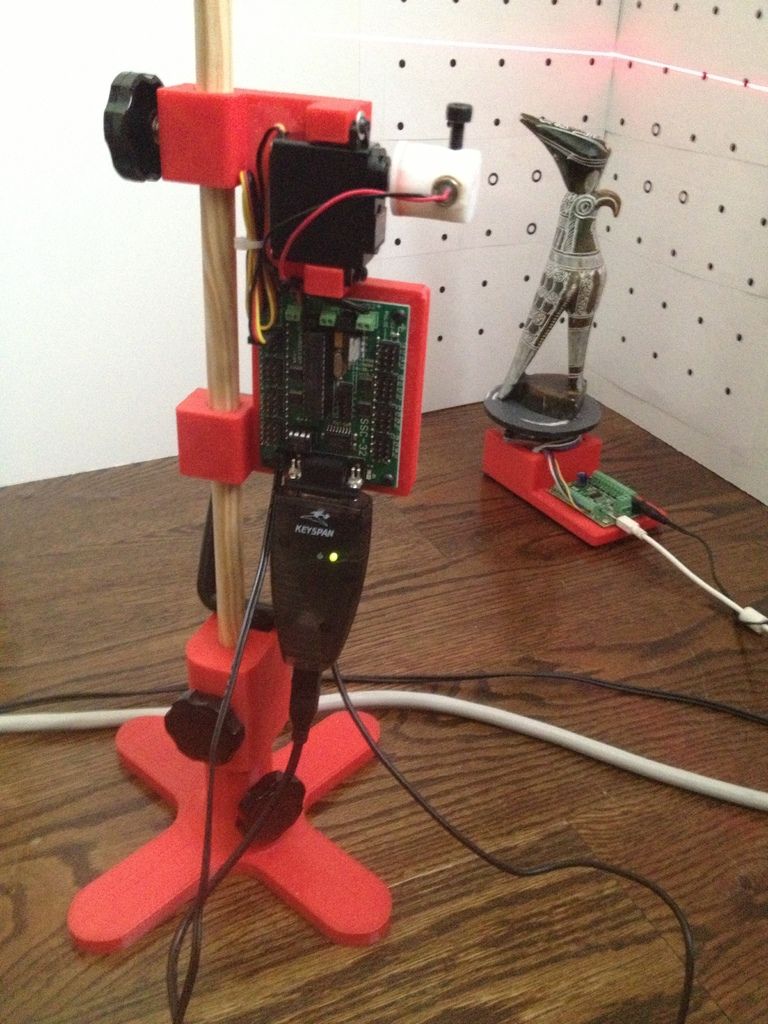
Nigel Streeter, who was the Special Effects Supervisor for Demons, designed and set up the Gibson Group CGI facility three years ago. He has remained at the helm ever since, producing a steady stream of impressive visual effects. As well as creating visual effects, Nigel and his team are skilled at 2D and 3D animation, specifically the creation of 3D environments and 3D character animation. They also write their own CGI scripts, and develop software for specific graphic requirements.
The challenge for Nigel and his team when working on Demons was the daunting task of developing special effects on a budget that was considered very limited, based on the effects they planned to create.The Polhemus 3D FastSCAN was the perfect solution.
As the industry's most compact handheld laser scanner, FastSCAN™ is a fast, flexible and attractively priced system for scanning 3D objects and significantly speeds up the 3D modeling and animation processes. Instead of bringing objects to the scanner, users take FastSCAN directly to the object – anywhere in the world.
Built with Polhemus' world-renowned FASTRAK® tracking technology, FastSCAN combines handheld convenience with the ability to "auto stitch" 3D models together in real-time. The scanner knows at all times exactly where it is in relationship to the object that it is being scanned.
This information is transmitted to the imaging software that instantly joins the pieces into a single, exact three-dimensional replica of the object being scanned. When you're done scanning, the files can be easily exported into nearly all leading CAD, graphics, and animation applications.
To keep production of Demons on schedule, a quick digital solution was needed. After an intense review of digital technology options, they came upon FastSCAN. First Sun determined that FastSCAN was the only viable scanning solution, and decided to go for it.
"The scanner arrived Friday evening and we began scanning within 30 minutes of unpacking the unit. We were extremely surprised with how easy the scanner was to use, and how portable it was.
" Nigel Streeter
The Producers immediately became at ease with their decision to go digital as they saw how simple it was going to be, and how much more detail and realism they could achieve by using FastSCAN. First, Nigel and his team digitized a small scale Maquette of the whole creature, then the full-scale model of the head and shoulders (bust). See the screen print of the scan that was digitized with FastSCAN and the maquette of the demon. This was created in just 15 minutes.
The scan of the head was used to get the detail of the creature. The scan of the small Maquette was used for the body, which was matched up to the head, scans in the digital domain. The scans were exported as obj.wire frames, and imported into Maya for manipulation, which was limited, as the scans were so clean and accurate.
"The high level of textural detail that we were able to capture was beyond what we ever imagined possible. It provided us with the ability to create creatures that lookvery real," said Streeter. "In the end, the FastSCAN allowed the movie to be truer to the original concept without filming the creatures in the physical world. FastSCAN also enabled the producers to view the special effects on screen in seconds. This helped to eliminate errors and made the entire creative processes more efficient."
"In the end, the FastSCAN allowed the movie to be truer to the original concept without filming the creatures in the physical world. FastSCAN also enabled the producers to view the special effects on screen in seconds. This helped to eliminate errors and made the entire creative processes more efficient."
Summary
The Gibson Group not only recognizes a need for the scanner as they utilized it here, but they would also like to have FastSCAN on every set to scan images that can be imposed into the film during post-production. According to Streeter, "We feel that FastSCAN is a great tool and reasonably priced solution. We would like to continue to use FastSCAN to produce high-quality, innovative, special effects for future projects. Scanning as a means of creating digital images, provides us with a fantastic solution for creating lower cost effects without having to sacrifice quality."
Learn More:
- FastSCAN
- Download PDF
- Contact sales@polhemus.
 com for more information.
com for more information.
Desktop 3D Scanners - EinScan Multifunctional 3D Scanner
Get a quote
Please fill out this form to receive a free quote within 24 hours (during working days).
AfghanistanALAND ISLANDSAlbaniaAlgeriaAmerican SamoaAndorraAngolaAnguillaAntigua And BarbudaArgentinaArmeniaArubaAustraliaAustriaAzerbaijanBahamasBahrainBangladeshBarbadosBelarusBelgiumBelizeBeninBermudaBhutanBolivia, Plurinational State OfBosnia And HerzegovinaBotswanaBouvet IslandBrazilBritish Indian Ocean TerritoryBrunei DarussalamBulgariaBurkina FasoBurundiCambodiaCameroonCanadaCape VerdeCayman IslandsCentral African RepublicChadChileChinaChristmas IslandCocos (Keeling) IslandsColombiaComorosCongoCook IslandsCosta RicaC?te D'IvoireCroatiaCubaCyprusCzech RepublicDenmarkDjiboutiDominicaDominican RepublicEcuadorEgyptEl SalvadorEquatorial GuineaEritreaEstoniaEthiopiaFalkland Islands (Malvinas)Faroe IslandsFijiFinlandFranceFrench GuianaFrench PolynesiaFrench Southern TerritoriesGabonGambiaGeorgiaGermanyGhanaGibraltarGreeceGreenlandGrenadaGuadeloupeGuamGuatemalaGuernseyGuineaGuinea-BissauGuyanaHaitiHeard Island And Mcdonald IslandsHoly See (Vatican City State)HondurasHong KongHungaryIcel andIndiaIndonesiaIran, Islamic Republic OfIraqIrelandIsle Of ManIsraelItalyJamaicaJapanJordanKazakhstanKenyaKiribatiKorea, Republic OfKosovoKuwaitKyrgyzstanLao People'S Democratic RepublicLatviaLebanonLesothoLiberiaLibyan Arab JamahiriyaLiechtensteinLithuaniaLuxembourgMacaoMadagascarMalawiMalaysiaMaldivesMaliMaltaMarshall IslandsMartiniqueMauritaniaMauritiusMayotteMexicoMicronesia, Federated States OfMoldova, Republic OfMonacoMongoliaMontenegroMontserratMoroccoMozambiqueMyanmarNamibiaNauruNepalNetherlandsNetherlands AntillesNew CaledoniaNew ZealandNicaraguaNigerNigeriaNiueNorfolk IslandNorthern Mariana IslandsNorwayNORTH KOREAOmanPakistanPalauPalestinian Territory, OccupiedPanamaPapua New GuineaParaguayPeruPhilippinesPitcairnPolandPortugalPuerto RicoQatarReunionRomaniaRussian FederationRwandaSaint BarthélemySaint HelenaSaint Kitts And NevisSaint LuciaSaint MartinSaint Pierre And MiquelonSaint Vincent And The GrenadinesSamoaSan MarinoSao Tome And PrincipeSaudi ArabiaSenegalSerbiaSeychel lesSierra LeoneSingaporeSlovakiaSloveniaSolomon IslandsSomaliaSouth AfricaSpainSri LankaSudanSurinameSvalbard And Jan MayenSwazilandSwedenSwitzerlandSyrian Arab RepublicTaiwan, Province Of ChinaTajikistanTanzania, United Republic OftestThailandTimor-LesteTogoTokelauTongaTrinidad And TobagoTunisiaTurkeyTurkmenistanTurks And Caicos IslandsTuvaluUgandaUkraineUnited Arab EmiratesUnited KingdomUnited StatesUruguayUzbekistanVanuatuVenezuela, Bolivarian Republic OfViet NamVirgin Islands, BritishVirgin Islands, U.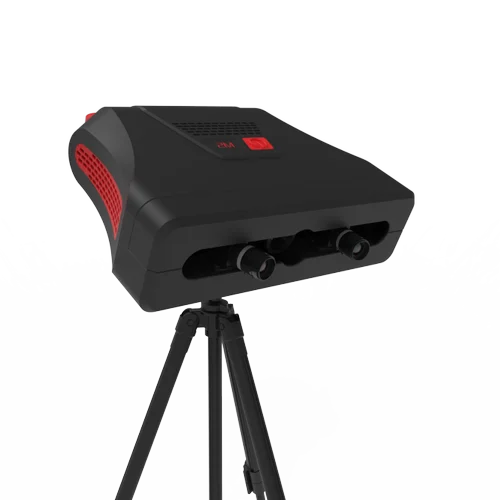 S.Wallis And FutunaWestern SaharaYemenZambiaZimbabweMACEDONIASOUTH GEORGIADemocratic Republic of the Congo
S.Wallis And FutunaWestern SaharaYemenZambiaZimbabweMACEDONIASOUTH GEORGIADemocratic Republic of the Congo
* Which product are you interested in?* Desktop 3d scanner* Hybrid light source handheld 3d scanner* Multifunctional handheld 3d scanner* Multiple scan range 3d scanner* Other Products and Service
submit...
Methods of optoelectronic measurement of human movements -
3D-scanning. motion capture technology.
Methods optoelectronic motion measurement of a person in sports (3D-scanning). Research human movements (sports in particular) requires registration, measurement and analysis process characteristics differences nature (biomechanical, physiological, biochemical, psychological, etc.). Biomechanical process representing is the movement of the human body and/or its links in time and space, is one of the current "outputs" human motor activity. Optimum
Optimum
providing a biomechanical program all movements must be directed other processes ( Suchilin N.G., Saveliev N.G., Popov G.I., 2000 ).
For adequate setting of goals and objectives sports activities, as well as optimization of management and control in the process of their development and improvement it is necessary to study biomechanical movement characteristics that recorded, measured and analyzed by various methods. Currently dominated by non-contact optoelectronic methods. The main ones are: 1. stroboscopic stereophotogrammetry, 2. biomechanical cinematography, 3. computer video analysis.
1. Stroboscopic stereophotogrammetry is the most accurate measurement method kinematic characteristics of movement person. Absolute errors measurement of the coordinates of the athlete's body points are 0.001 m, speeds are 0.05 m/s and acceleration - 1.5 m/s2. However, it is quite expensive, bulky, time-consuming and not flexible enough method, applicable only in laboratory conditions.
2. biomechanical cinematography. C appearance in the 70s of precision high-speed film cameras with high film transport stability in film channel (±1 frame at a frequency shooting 50 fps) and film analyzers, in which a standard film projector unit is interfaced through an analog-to-digital system conversion with microcomputer, more widespread cinematic measurement methods biomechanical characteristics of movements. Because of the simpler and more flexible points digitizing procedures method biomechanical cinematography became dominate the experimental biomechanics of sports 80-90s. (especially when analysis of the technique of sports movements). Compared to stereophotogrammetric method biomechanical method cinematography is less accurate. Total average cinematic accuracy error method when determining the coordinates of points object is 4 - 5 mm. For given motion parameters of the test object (according to displacement - 0.5 m, speed - 6 m/s and maximum acceleration 30 m/s2) absolute errors
by displacement is 5 mm, in terms of speed - 0.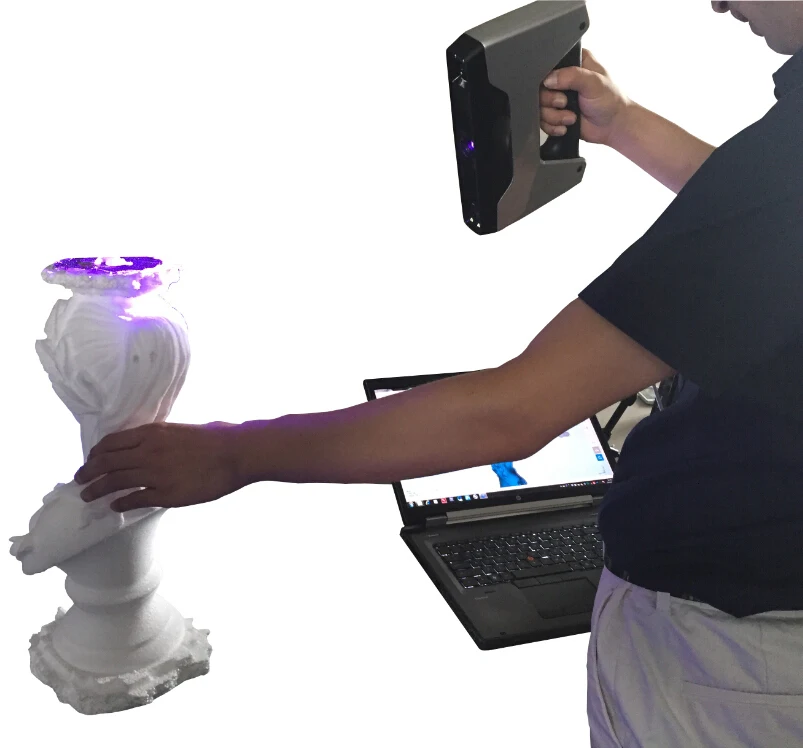 1 m/s and in terms of acceleration - 6m/s2. Relative error of the method in the calculation kinematic characteristics is by movements 1-3%, by speed - 3 + 5% and on acceleration -10+30%. video imaging for biomechanical movement analysis was constrained by a limit video recording frequency (50-60 Hz) and the absence shutter cameras. After the appearance such video cameras that provide shutter speed up to 1/500 s and thus reducing "blurring" the video image to minimum at high speeds, as well as high-frequency video cameras and VCRs that allow shoot at frequencies up to 500 Hz, application of video analysis systems in biomechanical research has become more real and began to be used even when analyzing fast movements impact and push type.
1 m/s and in terms of acceleration - 6m/s2. Relative error of the method in the calculation kinematic characteristics is by movements 1-3%, by speed - 3 + 5% and on acceleration -10+30%. video imaging for biomechanical movement analysis was constrained by a limit video recording frequency (50-60 Hz) and the absence shutter cameras. After the appearance such video cameras that provide shutter speed up to 1/500 s and thus reducing "blurring" the video image to minimum at high speeds, as well as high-frequency video cameras and VCRs that allow shoot at frequencies up to 500 Hz, application of video analysis systems in biomechanical research has become more real and began to be used even when analyzing fast movements impact and push type.
3. Computer video analysis. His main advantages are sufficiently high measurement accuracy, relative simplicity and flexibility use, the possibility of automatic digitizing points of a moving object and pairing the video image with a wide range of analog signals, received from other means of registration and motion measurements (tensography, goniography, cardiography, etc. ). original material does not require prior processing and analysis can start immediately after
). original material does not require prior processing and analysis can start immediately after
filming or in the process of it (when using automatic digitizing devices on-line mode). Compared with photogrammetric and cinematic video analysis systems relatively inexpensive and commercial available. Until recently, accuracy determining the coordinates of points using cinema analyzing systems (16 mm film) was higher than that of videoanalyzers systems. Although differences in accuracy between they were statistically significant (total average error of determination object point coordinates 4.8 mm and 5.8 mm respectively for cinema and video methods, P<0.05), from a practical point of view video method error was 0.29% calibration
space, and the film method 0.24%, i.e. the accuracy of both methods was practically comparable.
Results recent research latest versions video analysis systems carried out at Loughborough Biomechanics Laboratory (England), have shown that their accuracy is not is only equal to the accuracy of film analyzers systems (16 mm), traditionally adopted in applied biomechanical research, but also surpasses it.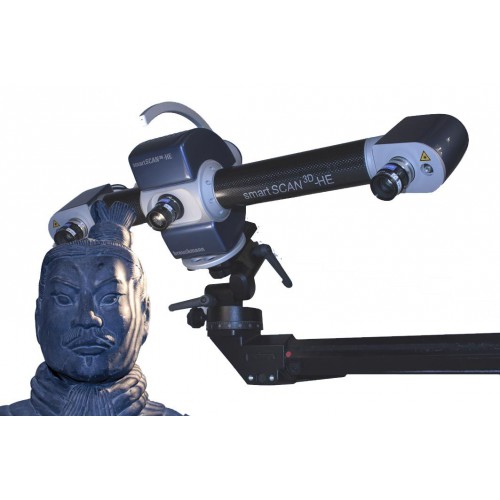 Factors increasing measurement accuracy coordinates using video analyzing systems are high resolution the ability of video equipment (video camera, VCR, monitor, dimensions pixel) and video quality. These requirements are met recently developed video analyzing system Multiped Apex Frame Store , used with a camcorder Sony HAD with HI 8 movie recording format. This system uses 24 bit color palette compared to one of the best video analysis systems "Milhped Prisma III" . Apex Cursor Measurement carried out with a step equal to 1/4 pixel, instead of one pixel in the Prisma system. However, such systems are not applicable in competition practice and can be used primarily in laboratories conditions. Systems with automatic digitization is not inferior to video analysis systems with manual digitization for accuracy point coordinate measurements. However, they are much more expensive and, moreover, to those analyzed during the experiment movements are superimposed restrictions.
Factors increasing measurement accuracy coordinates using video analyzing systems are high resolution the ability of video equipment (video camera, VCR, monitor, dimensions pixel) and video quality. These requirements are met recently developed video analyzing system Multiped Apex Frame Store , used with a camcorder Sony HAD with HI 8 movie recording format. This system uses 24 bit color palette compared to one of the best video analysis systems "Milhped Prisma III" . Apex Cursor Measurement carried out with a step equal to 1/4 pixel, instead of one pixel in the Prisma system. However, such systems are not applicable in competition practice and can be used primarily in laboratories conditions. Systems with automatic digitization is not inferior to video analysis systems with manual digitization for accuracy point coordinate measurements. However, they are much more expensive and, moreover, to those analyzed during the experiment movements are superimposed restrictions.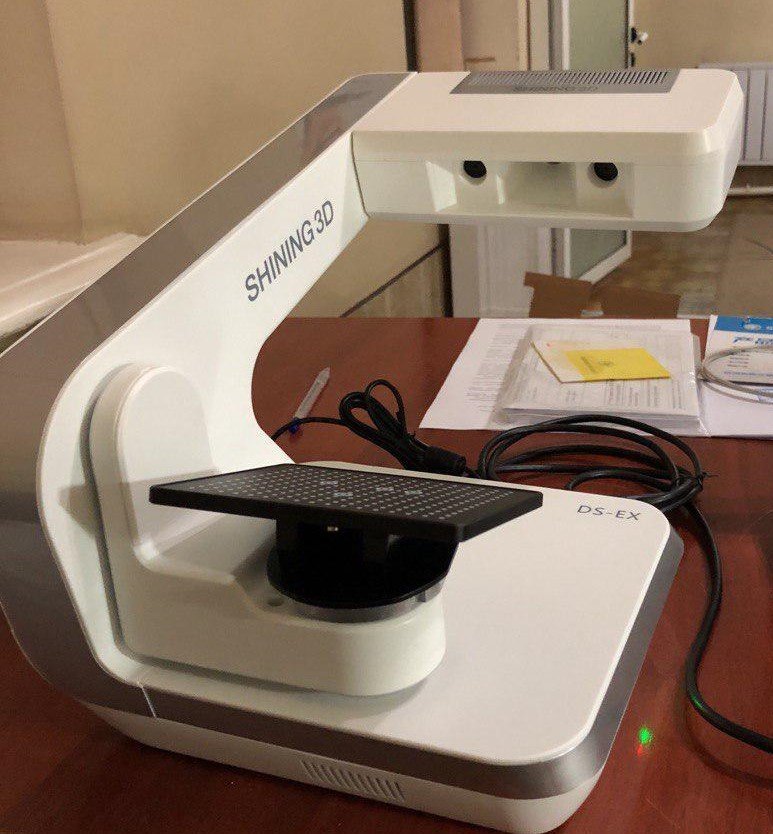 These systems have received name " capture traffic » ( motion capture ).Shooting one camera with detection of two moving object point coordinates is the limiting factor for study of complex spatial human movements. Fairly accurate relatively simple and flexible using the method of determining three-dimensional coordinates of points of a moving feature is method direct linear transformation ( DLT-method ), designed by Abdel-Aziz and Karara (1971), and his linear and non-linear modifications (Hatze, 1988). Reconstruction of 3D coordinates DLT method is made on the basis of flat object images received from two cameras. Based on analytical photogrammetry and designed for stereo and video recording methods movements, the DLT method gives fairly accurate results and is widely used in modern experimental biomechanics. Main advantage method DLT is that when it use, unlike other spatial reconstruction methods object, external and internal parameters cameras (their position and orientation according to relation to the subject, distortion lenses and images) do not require measurements.
These systems have received name " capture traffic » ( motion capture ).Shooting one camera with detection of two moving object point coordinates is the limiting factor for study of complex spatial human movements. Fairly accurate relatively simple and flexible using the method of determining three-dimensional coordinates of points of a moving feature is method direct linear transformation ( DLT-method ), designed by Abdel-Aziz and Karara (1971), and his linear and non-linear modifications (Hatze, 1988). Reconstruction of 3D coordinates DLT method is made on the basis of flat object images received from two cameras. Based on analytical photogrammetry and designed for stereo and video recording methods movements, the DLT method gives fairly accurate results and is widely used in modern experimental biomechanics. Main advantage method DLT is that when it use, unlike other spatial reconstruction methods object, external and internal parameters cameras (their position and orientation according to relation to the subject, distortion lenses and images) do not require measurements. These options are presented group of 11 unknown coefficients (so-called DLT parameters), which in an implicative form contain the necessary information about the parameters of the cameras and determine linear transformation between 3D spatial object and its two-dimensional planar display. To define DLT parameters before experiment needs to be done calibration procedure by shooting special test object (parallelepiped, cube, prism, polyhedron, etc.) with evenly located within its space control points (markers). The actual coordinates of these control points in the inertial system coordinates should be determined by direct precision measurement with precision up to 0.5-1.0 mm. After digitizing control points based on survey data their calculated two-dimensional and real three-dimensional coordinates must be entered in 12 DLT equations compiled for each cameras. The solution of these equations will allow determine 11 unknown parameters DLT. To define 11 DLT parameters need to know the real 3D and calculated 2D coordinates of at least 6 control points (2 DLT equations for one point ×6 control points =12).
These options are presented group of 11 unknown coefficients (so-called DLT parameters), which in an implicative form contain the necessary information about the parameters of the cameras and determine linear transformation between 3D spatial object and its two-dimensional planar display. To define DLT parameters before experiment needs to be done calibration procedure by shooting special test object (parallelepiped, cube, prism, polyhedron, etc.) with evenly located within its space control points (markers). The actual coordinates of these control points in the inertial system coordinates should be determined by direct precision measurement with precision up to 0.5-1.0 mm. After digitizing control points based on survey data their calculated two-dimensional and real three-dimensional coordinates must be entered in 12 DLT equations compiled for each cameras. The solution of these equations will allow determine 11 unknown parameters DLT. To define 11 DLT parameters need to know the real 3D and calculated 2D coordinates of at least 6 control points (2 DLT equations for one point ×6 control points =12).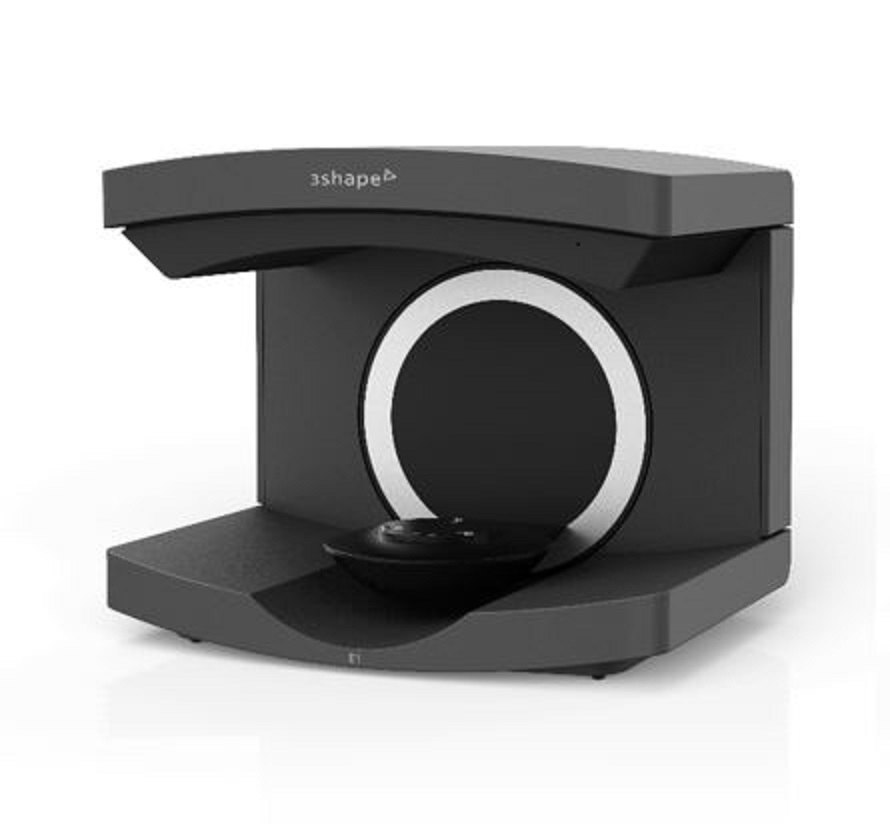 Best Results obtained by using from 12 to 22 control points, evenly distributed in the control space test object, which should occupy volume sufficient to carry out researched movement. Recommended avoid location of control points in the corners and along the edges of the test object. After shooting, the test object should be removed out of sight
Best Results obtained by using from 12 to 22 control points, evenly distributed in the control space test object, which should occupy volume sufficient to carry out researched movement. Recommended avoid location of control points in the corners and along the edges of the test object. After shooting, the test object should be removed out of sight
nia cameras and at its former location the same cameras (without changing their positions) to take a picture of the real object (for example, an athlete) with subsequent digitization of coordinates reference points of its two planar mappings in sequence movement (frame by frame). Further already known DLT parameters along with calculated two-dimensional coordinates points of a real object are entered into those the same DLT equations that are solved relatively unknown 3D spatial coordinates X, Y and Z of these points. Developed software for computers modern video analyzing systems provide reliable and adequate accurate 3D reconstruction of movements spatial object.
B At the same time, it should be noted that enough to study technology a large number of sports
exercises (for example, various "smooth" revolutions, jumps and dismounts in sports gymnastics, acrobatic jumps, jumping into the water and on the trampoline, etc.) spatial reconstruction is not required, because athlete's body links move in a plane parallel to the plane of movement his OCM. In the study of such movements to obtain the necessary biomechanical information is necessary and sufficient orthogonal shooting with one camera. The most famous companies producing video analyzing software and hardware funds are currently Peak Performance Technologies , Inc » , « Motion Analysis , Inc » , « Northern Digital sWatsmart « Oxford Metrics " « VITUS »
Video analysis systems in physical culture and sports must first respond to the following questions:
a) what are the biomechanical parameters optimized model engineering
specific movement?
b) what is the specific movement technique individual is parametrically different
from optimal?
c) what happens biomechanically, if a specific individual
certain change the parameters of your movement?
d) how to change motion parameters specific individual in order to reach
given result?
Systems motion capture are divided into mechanical, magnetic and optical.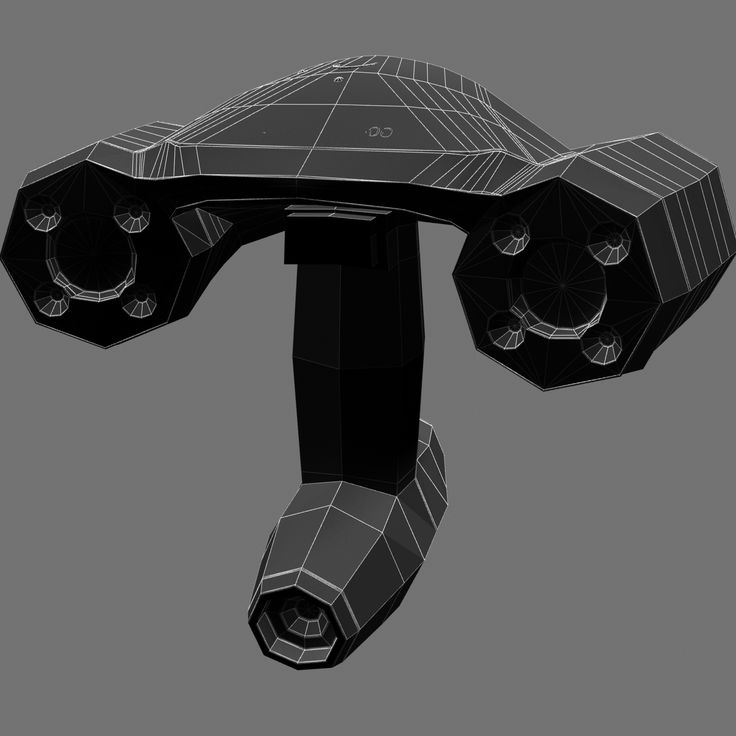 Mechanical systems represent a skeleton with a system of sensors, put on a person. In this way, tracked as the position of everything skeleton as a whole, and the position relative to each other
Mechanical systems represent a skeleton with a system of sensors, put on a person. In this way, tracked as the position of everything skeleton as a whole, and the position relative to each other
separate its segments.
Magnetic systems represent is a set of sensors fixed on the human body, and a magnetic generator field installed outside. Sensors capture the magnetic field, and by delays and some other parameters are defined position and orientation of the sensor in space (three XYZ coordinates and three angle around these axes - 6 DOF, six degrees of freedom). Hence follows restriction - the actor must be within the range of the pulse generator. Usually this is a small closed space with an area of 3x3 or 5x3 m. The presence of strangers in the magnetic field metal objects also reduces accuracy of measurements. In addition, magnetic systems give not such high quality results like optical
systems, therefore require the use of special filters and manual fine-tuning. However, the data systems are widespread due to its low price - from €30 thousand . up to 70 thousand . depending on the number of sensors, wireless or wired implementation systems. Systems of this class are engaged world renowned companies such as Polhemus (system Motion capture server) and Ascension Technology Corp (system Flock ofBirds) (Table 5.2).
However, the data systems are widespread due to its low price - from €30 thousand . up to 70 thousand . depending on the number of sensors, wireless or wired implementation systems. Systems of this class are engaged world renowned companies such as Polhemus (system Motion capture server) and Ascension Technology Corp (system Flock ofBirds) (Table 5.2).
At development of the Russian Motion system Capture specialists set themselves several important tasks. One of the main - enable data capture unlimited area: the actor rises up the stairs in the house, the actor is walking through the woods or playing a character in a stadium. For these purposes, a alternative system. If in Western developments have some rappers (reference) points, then in the Russian system there are so-called rapper directions. Knowing the angles between the segments,
we we can orient the segments of the skeleton relative to each other.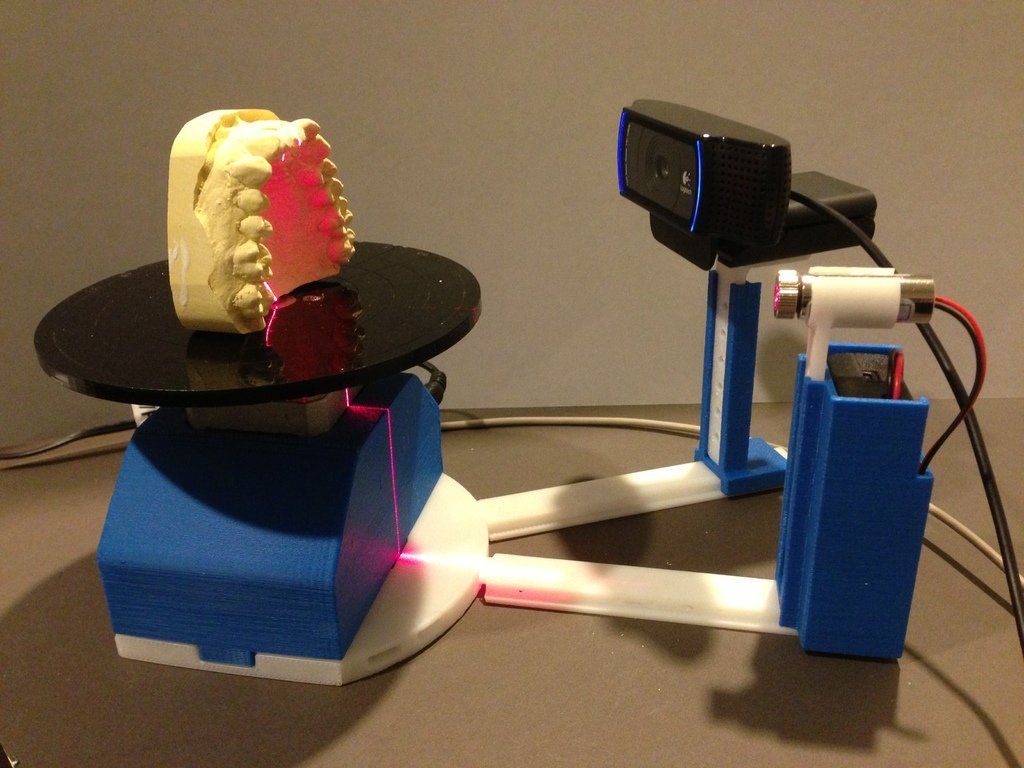 To orient the skeleton in space, used to compare rappers directions of space with readings sensors.
To orient the skeleton in space, used to compare rappers directions of space with readings sensors.
Sensors in the Virtoons system are different high degree of complexity. They consist of three magnetometers, three accelerometers, three gyroscopes and one microprocessor, processing data from these nine devices. Unlike Western systems in Russian development natural magnetic and the gravitational field of the Earth, that is no dependence on external magnetic transmitter system. Price domestic development - €20-25 thousand There are mechanical, magnetic and optical systems. Technology Data Motion Capture can, for example, be processed 3D graphics package 3ds max .
Systems automatic digitization of movements human - "motion capture" (Motion Capture) - appeared in the late 80's - early 90's last century. be used in sports in the preparation of gymnasts for the Olympic games, they started from 1993 in the USA. Then well, they were used to create movie Jurassic Park. One of currently available systems motion capture -
One of currently available systems motion capture -
is device Ascension ReActor2 Principle work. At absence of sensors and cables fixed on the body of an athlete, ReActor2 provides him complete freedom of movement. Digital detectors provide full coverage working space with minimization block markers. In this case recognition system Instant Marker Recognition (IMR) cleans up data and re-enters
, which reduces the amount of post-processing and improves overall performance.
Functions:
• Sports and medical analysis
• Rehabilitation processes
• Personalized 3D animation for TV, cinema, computer games
• Performance
• Grade labor productivity
Opportunities and benefits. Fixed set of digital detectors: full coverage working space with minimal data loss. Less time spent for calibration. IMR: blocked data quickly reintroduced. Fixed camera set: no calibration required generally. Ease of use: works in almost any environment. Comfortable interface. Export data to most animation packages.
IMR: blocked data quickly reintroduced. Fixed camera set: no calibration required generally. Ease of use: works in almost any environment. Comfortable interface. Export data to most animation packages.
Features
Technical:
• Quantity markers: 30 active optical markers; 27 diodes for
marker.
• Quantity detectors: for model 332 - 448 on cube frame, for model
342 - 512 .
• Frequency data updates: up to 900 measurements per sec.
• Generation data reports: up to 30 measurements in sec.
• Interface: ethernet.
• ON: FusionCore ™ package for real-time visualization, editing
data and export to animation packages.
• Applied Software: Kaydara MOTIONBUILDER™ and MOCAP™; most
modern animation packages.






